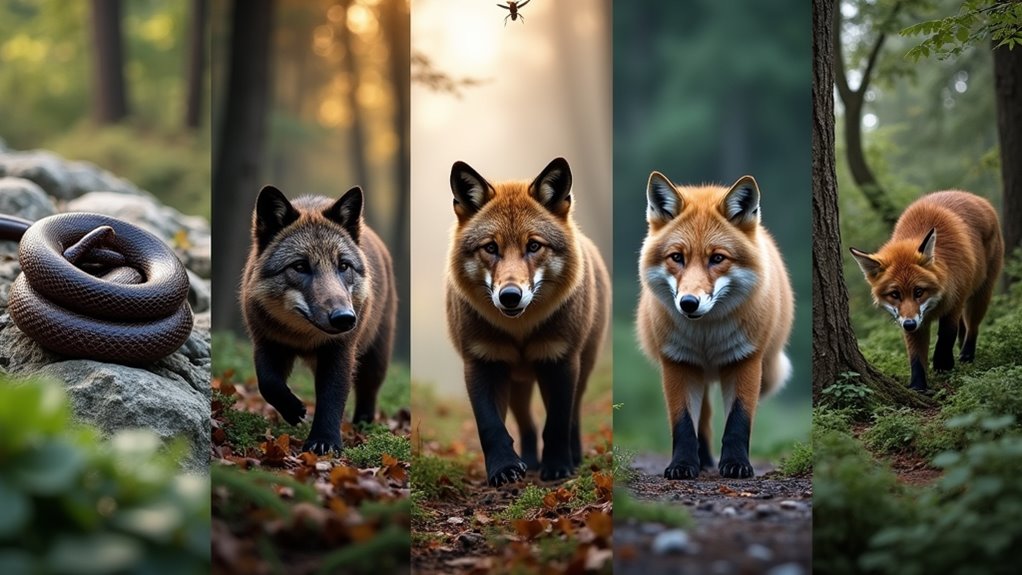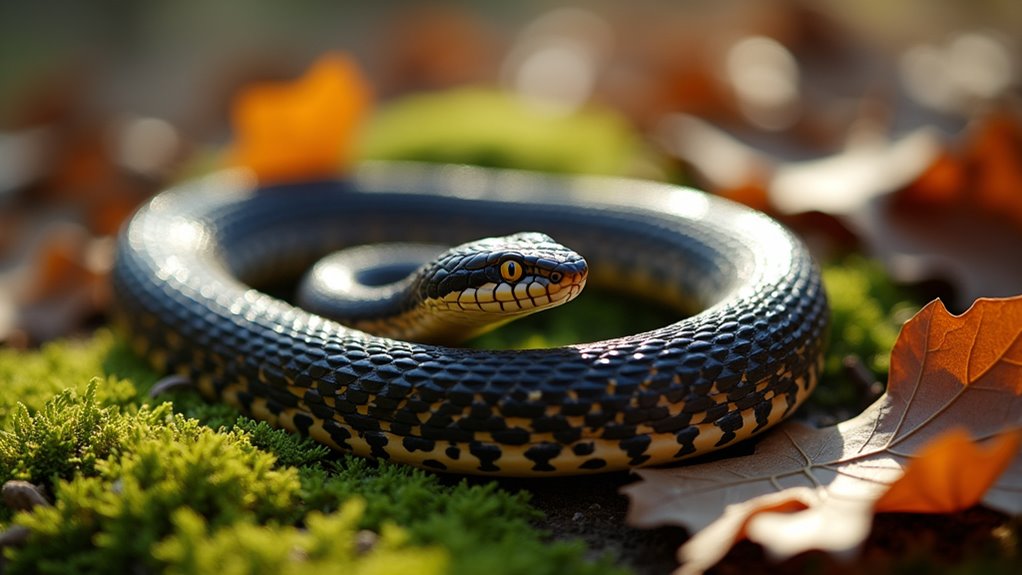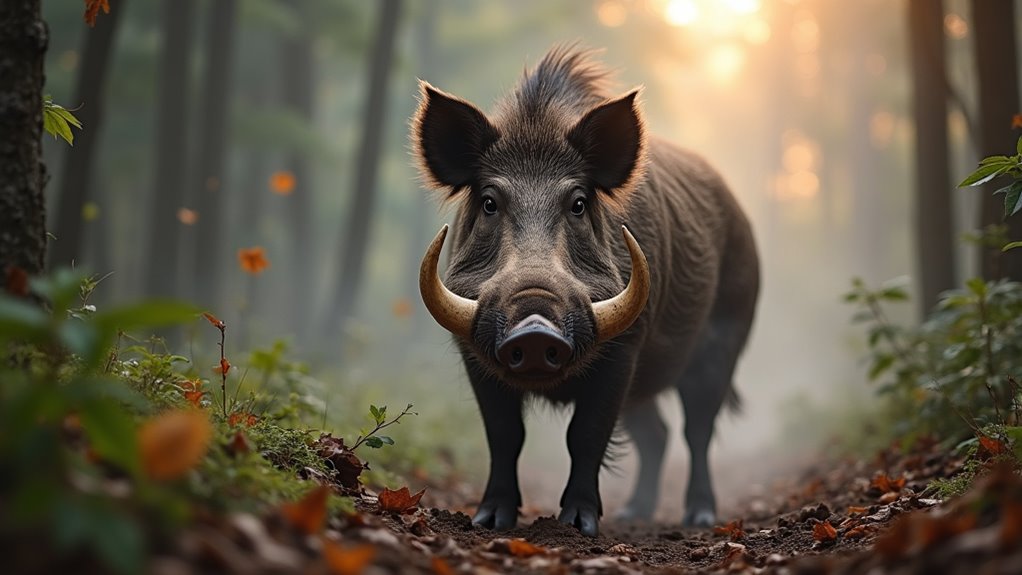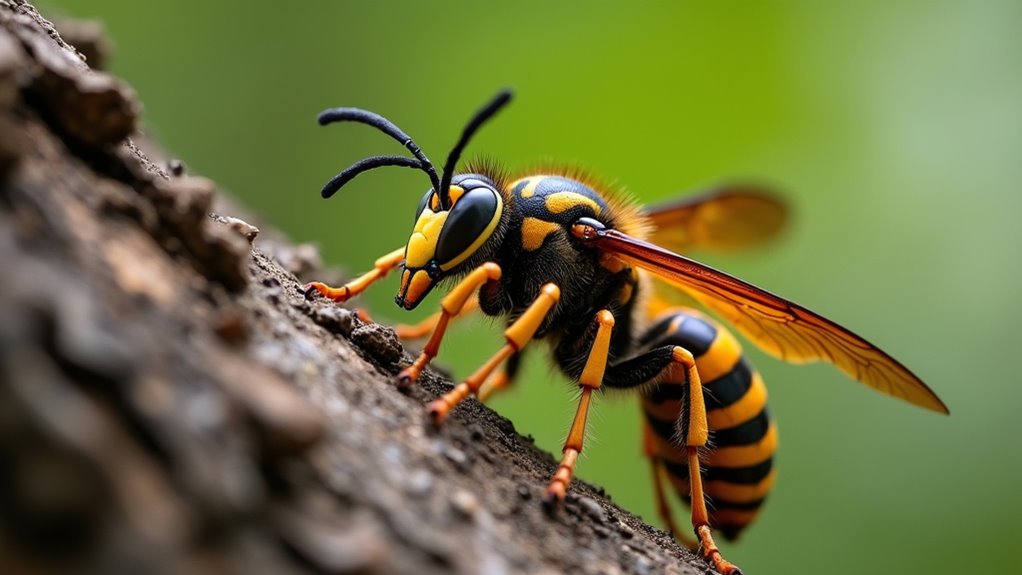Physical Address
304 North Cardinal St.
Dorchester Center, MA 02124
Physical Address
304 North Cardinal St.
Dorchester Center, MA 02124

Curious about Austria's seven deadly creatures lurking in Alpine forests? Discover which unexpected animals pose the greatest threat to hikers.
Austria’s most dangerous wildlife includes brown bears in Alpine regions, venomous European adders, disease-carrying ticks, aggressive wild boars, territorial red deer (especially during rutting season), and painful European hornets. While fatalities are rare, you’ll need to exercise caution during outdoor activities, particularly in forests and alpine meadows. Bears and boars can be protective of their young, while adder bites require immediate medical attention. Discover how to safely navigate Austria’s wilderness and identify these potential threats.

While Austria’s picturesque landscapes may seem perfectly safe, the country is home to several potentially dangerous animal species that visitors and locals should be aware of.
Austria’s idyllic scenery conceals wildlife dangers that travelers and residents should recognize before venturing outdoors.
The Common European Adder is Austria’s most widespread venomous snake, causing pain and swelling when it bites.
Wild boars can become aggressive if they feel threatened or cornered in forested areas.
Though rarely encountered, bears and wolves inhabit remote Alpine regions and may become protective of their territory. The Eurasian Brown Bear, measuring 5-9 ft long and weighing up to 550 lbs, is one of Austria’s largest animals that can pose a significant threat when disturbed.
Foxes and lynxes generally avoid humans but can pose threats when provoked.
The Horned Viper, found primarily in southern Austria, delivers painful bites with its potent venom.
Even after Austria’s successful rabies eradication in 2008, maintaining distance from wild animals remains essential for your safety. Unlike the clear waters of Dubrovnik where marine life is easily visible, Austria’s forests and mountains can hide dangerous wildlife until you’re too close for comfort.
Despite their near extinction in the 18th century, brown bears have begun making a careful return to Austria’s alpine landscapes. These massive predators are part of the larger Dinaric-Pindos population, which numbers around 3,000 bears slowly recolonizing parts of the Alps.
You’ll find Austria’s bear populations remain small and isolated, facing threats from habitat fragmentation, human conflicts, and limited genetic diversity. Much like Split’s natural beauty, Austria’s wilderness regions require careful protection for wildlife conservation. Conservation efforts include reintroduction initiatives in the Northern Limestone Alps and damage compensation programs through insurance companies. Brown bears in Austria represent one of the many fragmented habitats across Europe that challenge the species’ long-term survival.
If you encounter a brown bear while hiking Austrian trails, remember their ecological significance. These apex predators maintain ecosystem balance by controlling small mammal populations and dispersing seeds across habitats.
Human-bear coexistence remains essential for preserving Austria’s natural alpine ecosystems.

Although rarely encountered, the European adder represents Austria’s sole venomous snake species, identifiable by its distinctive zigzag dorsal pattern and elliptical pupils.
You’ll find these 24-35 inch serpents across most Austrian states, preferring forest edges, moors, and alpine meadows with high humidity.
While their hemotoxic venom causes pain and swelling, fatalities are extremely rare. If bitten, seek medical attention immediately—antivenom is widely available throughout Austria.
These protected snakes are primarily active during daylight in spring and autumn but switch to nocturnal habits during summer heat. As an ovoviviparous species, females give birth to 3 to 20 live young rather than laying eggs.
They hibernate communally in winter, utilizing rodent burrows or insulated microhabitats like compost heaps.
Unlike Croatia’s coastal areas where hedonistic nightlife thrives, Austrian wilderness offers quieter encounters with wildlife that demand respect rather than revelry.
As you hike through Austria’s lush forests, you’ll need to watch out for more than just snakes or large predators—the country’s tiny ticks pose perhaps the most significant wildlife threat to humans.
Ixodes ricinus dominates at 95% of Austria’s tick fauna, with 23% carrying Borrelia bacteria that causes Lyme disease.
Your risk period extends from March through November, with peak danger in spring and autumn.
Ticks thrive below 1,500m altitude, particularly in Danube wetlands and eastern forests, but urban parks aren’t safe either.
For protection, wear light-colored clothing treated with permethrin, apply DEET or picaridin repellents every 2-4 hours, and conduct thorough body checks after outdoor activities. Contrary to common belief, ticks do not fall from trees but instead wait on ground-level vegetation for hosts to pass by.
With 25,000-70,000 annual Lyme cases, these precautions aren’t optional.

While ticks may be Austria’s tiny terrors, wild boars represent a more formidable woodland presence you might encounter during your Austrian adventures. Despite Austria’s efforts to manage their numbers through year-round hunting (with 43,800 shot in 2022/23), these powerful mammals still roam freely across the country’s varied landscapes.
You’ll face the greatest risk when encountering females with young, as they’ll fiercely protect their offspring. Though attacks on humans remain rare, they do occur when boars feel threatened. Similar to incidents in Bavaria, wild boars in Austria have been known to invade gardens and cause destruction when they venture into populated areas. Unlike Cyprus’s party destinations, Austrian forests offer thrilling but potentially dangerous wildlife encounters rather than nightlife entertainment.
If hiking through Austrian forests, keep your dogs leashed and maintain a safe distance from any boars you spot. Their unpredictable nature and substantial size make them dangerous when cornered or startled, especially as they increasingly venture into human settlements searching for food.
Did you know that Austria’s majestic red deer, often called the “King of the Forest,” transforms from a magnificent woodland creature into a potentially dangerous adversary each autumn?
During rutting season (mid-September to early October), male stags become highly aggressive, especially during twilight hours. Weighing 200-300 kg with impressive antlers, these normally cautious animals become belligerent and territorial as they compete for females.
You’ll recognize rutting behavior by the distinctive roaring and increased activity. Hunters often use specialized caliber choices like 7×64 or .300 Win. Mag. to ensure ethical hunting during this period. If you’re hiking Austrian forests during this period, maintain a safe distance from any red deer you encounter.
Their unpredictable aggression presents real risks to humans who venture too close. Unlike planning a leisurely Mediterranean vacation where your biggest concern might be choosing between Greece or Italy, encountering aggressive red deer requires serious caution.
Hunters target these animals using blinds and high seats, but even experienced outdoorsmen approach with caution during rut, when the forest king‘s temperament matches his royal status.

While red deer rule Austria’s forests during rutting season, another formidable forest dweller demands year-round respect: the European hornet (Vespa crabro). These impressive insects are larger than common wasps, reaching 3.5 cm in length, but they’re actually less aggressive than their smaller cousins.
If you encounter European hornets in Austrian woodlands, remember:
Despite their intimidating size and painful sting, these hornets deserve your respect rather than fear—they’re essential pollinators and predators that maintain forest ecosystem balance. The hornet’s sting usually doesn’t require medical treatment, though rare cases may involve symptoms like tingling, headaches, and atrial fibrillation.
Much like Zagreb’s attractions, Austrian forests offer natural wonders that reward respectful visitors with unique wildlife encounters.
You’ve now seen the wild side of Austria beyond its picturesque landscapes. While these creatures might seem intimidating, remember that attacks are extremely rare. Most animals avoid human contact whenever possible. By maintaining a respectful distance, making noise on trails, and learning proper wildlife response techniques, you’ll safely enjoy Austria’s natural beauty. The real danger isn’t the wildlife—it’s being unprepared for potential encounters.